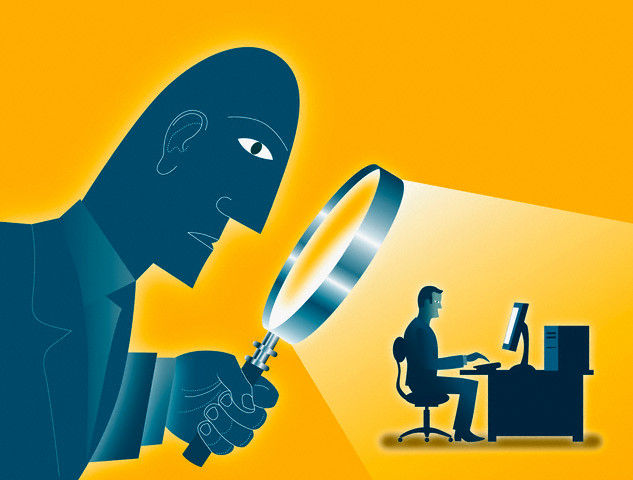
It is quite easy to believe the fact that one’s online and offline privacy is secure and that no one is spying on you. Sadly, holding such believes can put you at a greater risk of becoming a victim of e-crime, you could end up losing your identity and reputation. Therefore, it is absolutely mandatory that you take all available precautions while using your personal computer – online and offline. However, in order to protect your privacy on the internet, you need to utilize the various tools – paid and unpaid – developed to guard one’s online and offline privacy. Using tools such as Virtual Private Networks (VPN) and securing your data-at-rest and data-at-motion can shield you from digital spying.
Virtual Private Networks:
VPN’s are a must today, especially if you live in a country that oppresses its citizens from expressing their freedom of speech and expression. Not only that, but VPNs can fool e-criminal from determining your location and your true identity – given the fact that you don’t share your real personal information on the internet. In a nutshell, VPNs can prevent spies from pinpointing your location. Virtual Private Networks work by masking your true IP address and replacing it with a false one, making it impossible to track down your true physical location. With virtual private networks, although, nearly all social media website provide a secure HTTPS connection – making sure your privacy is never compromised – some countries have completely banned social media websites, making it impossible for the user to access social media sites from within that country. Nonetheless, not only do VPN’s protect your online privacy, but they also enable the user to access banned websites in that country. Thus, for these reasons, VPN’s are considered a must privacy protection tool. Perhaps one of the most popular and free VPN is Hotspot Shield.

Securing data-at-rest and data-at-motion:
You may be wondering what data at rest and data in motion are? Well, data at rest is data stored on your computer. On the other hand, data in motion is data that is being uploaded and downloaded to and from a cloud server-whether for sharing purposes or backup purposes. However, sensitive data, whether on your PC or on a cloud server needs to be secured. Thus, if you have not already secured your data with data security software, there is a fair chance that you may have already been targeted. Data security software which functions like a virtual file lock can prevent criminals from accessing sensitive information in case you have your laptop or desktop stolen or misplaced. Moreover, some data security software also let you backup your data securely to a cloud server. Desktop data security software such as Folder Lock has both of these features built into it.
Steps To Protect Internet Privacy
We take a number of steps to protect your Internet privacy. These include:
• Implementing strict security measures such as encryption, firewalls, and secure servers.
• Requiring strong passwords and two-factor authentication for account access.
• Regularly monitoring our systems for unauthorized access or suspicious activity.
• Using secure protocols such as HTTPS for all web traffic.
• Regularly scanning our systems for viruses and other malicious software.
Ways To Protect Privacy
1. Use a Virtual Private Network (VPN) – VPNs encrypt your data and make it harder for your online activities to be tracked.
2. Use Privacy-Friendly Browsers – Choose a browser that respects your privacy, such as Mozilla Firefox or Brave.
3. Enable Two-Factor Authentication – Use two-factor authentication on all your accounts to add an extra layer of security.
Basic Privacy Principles
1. Notice/Awareness: Individuals should be informed of the data processing activities that are taking place.
2. Choice/Consent: Individuals should have the right to choose whether or not their personal data is collected and processed.
3. Collection Limitation: Personal data should only be collected for specific, explicit, and legitimate purposes.
4. Data Quality: Personal data should be accurate, complete, and up-to-date.
5. Purpose Specification: Personal data should only be collected for specific, explicit, and legitimate purposes.
6. Use Limitation: Personal data should only be used for the purpose for which it was collected.
7. Security: Personal data should be stored in a secure environment.
8. Openness: Individuals should be informed of the data processing activities that are taking place.
9. Individual Participation: Individuals should have the right to access and correct their personal data.
10. Accountability: Organizations should be held accountable
Main Rules Of Privacy
1. Notice: Organizations must provide individuals with notice about their data collection and processing activities.
2. Choice: Individuals must be able to choose whether or not to share their personal data.
3. Access: Individuals must be able to access their personal data and correct any inaccuracies.
4. Security: Organizations must keep personal data secure and protect it from unauthorized access.
5. Accountability: Organizations must be accountable for their data processing activities.
Main Types Of Privacy
1. Informational privacy: This type of privacy concerns the collection, use, and disclosure of personal information. It is focused on protecting the individual’s right to control their own information.
2. Decisional privacy: This type of privacy focuses on the individual’s right to make decisions without outside interference or influence.
3. Bodily privacy: This type of privacy focuses on the individual’s right to control their own body and to not be subject to unwanted physical
Biggest Privacy Threats Online
1. Malware: Malware is malicious software designed to gain access to personal information without the user’s knowledge or consent. It can be used to steal passwords, credit card numbers, and other sensitive information.
2. Phishing: Phishing is a type of cyber attack where malicious actors send emails or messages that appear to be from legitimate sources in order to trick users into revealing personal information.
3. Data breaches: Data breaches occur when hackers gain access to confidential information
Main Threats To Information Privacy
1. Unauthorized access: Unauthorized access is when someone gains access to data or systems without permission.
2. Malware: Malware is malicious software, such as viruses or spyware, that can be used to monitor or steal data.
3. Social engineering: Social engineering is when attackers use psychological manipulation to trick people into giving up sensitive information.
4. Data leakage: Data leakage is when data is shared or transferred without the user’s knowledge or consent.
Steps You Can Take To Protect Personal Privacy
1. Use strong passwords: Create passwords that are long and complex and use different passwords for different accounts.
2. Secure your devices: Use security software and keep your operating system and other software up to date.
3. Be cautious online: Be aware of what you share online and be careful of who you interact with.
4. Monitor your credit: Monitor your credit report and be aware of any suspicious activity.
What Is Privacy Protection?
Privacy protection is the process of protecting an individual’s personal information from unauthorized access and use. This includes protecting data from being collected, used, or disclosed without the individual’s consent. It involves using various technologies, such as encryption, to protect data, as well as developing policies and procedures to ensure that data is collected and used in a secure manner.
Best Practice For Privacy And Security
The best practice for privacy and security is to use a layered approach. This includes using encryption for data in transit and at rest, using secure authentication methods, and implementing access control measures. Additionally, organizations should be aware of the latest privacy and security regulations and ensure that their systems and procedures comply with them. Finally, organizations should regularly review and update their privacy and security policies to ensure that they are up-to-date and effective.
Way To Stop Online Tracking
Online tracking can be prevented by using a variety of tools, such as a virtual private network (VPN), browser extensions, and ad blockers. Additionally, users can disable cookies, limit the amount of data they share with third parties, and use private browsing modes. Additionally, users can adjust their privacy settings on social media platforms and other websites, as well as limit the amount of personal data they provide to companies.
Stop My Phone From Being Monitored
To stop your phone from being monitored, you should take the following steps:
1. Disable location services on your phone. This will prevent apps from accessing your location without your permission.
2. Use a secure password for your phone. This will prevent unauthorized access to your device.
3. Install an antivirus and anti-malware software. This will protect your phone from malicious software.
4. Disable Bluetooth when not in use. This will prevent your
Ways To Know If My Phone Is Being Tracked
There are several ways to tell if your phone is being tracked. First, you can check your phone’s settings to see if any apps are accessing your location or other data. If you notice any suspicious activity, it is likely that your phone is being tracked. You can also check for any suspicious phone calls or text messages, as well as any changes to your phone’s settings. Additionally, if your phone is suddenly running slower than usual, this may be a sign that it is being tracked.
Powered by NewSoftwares.net
